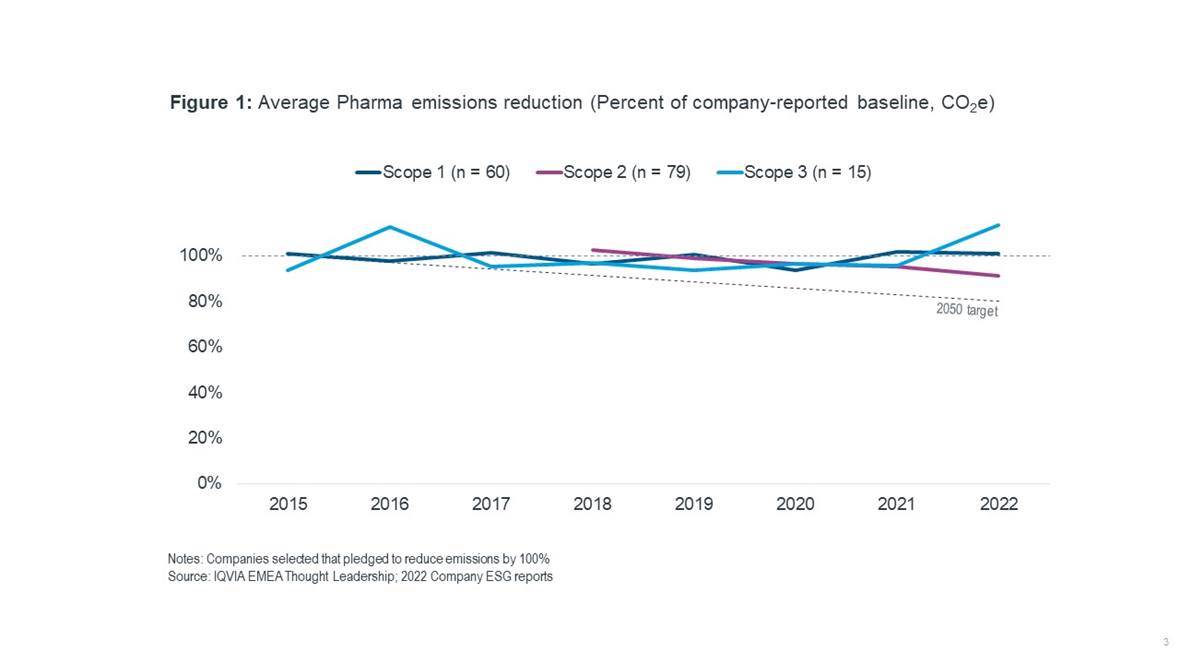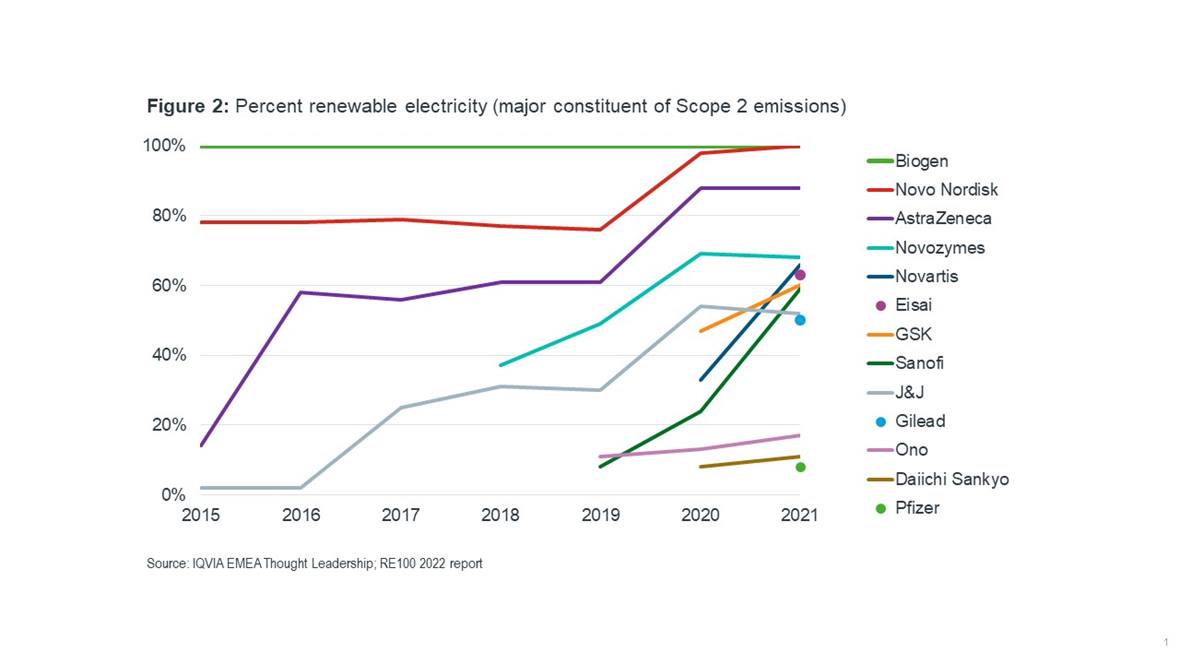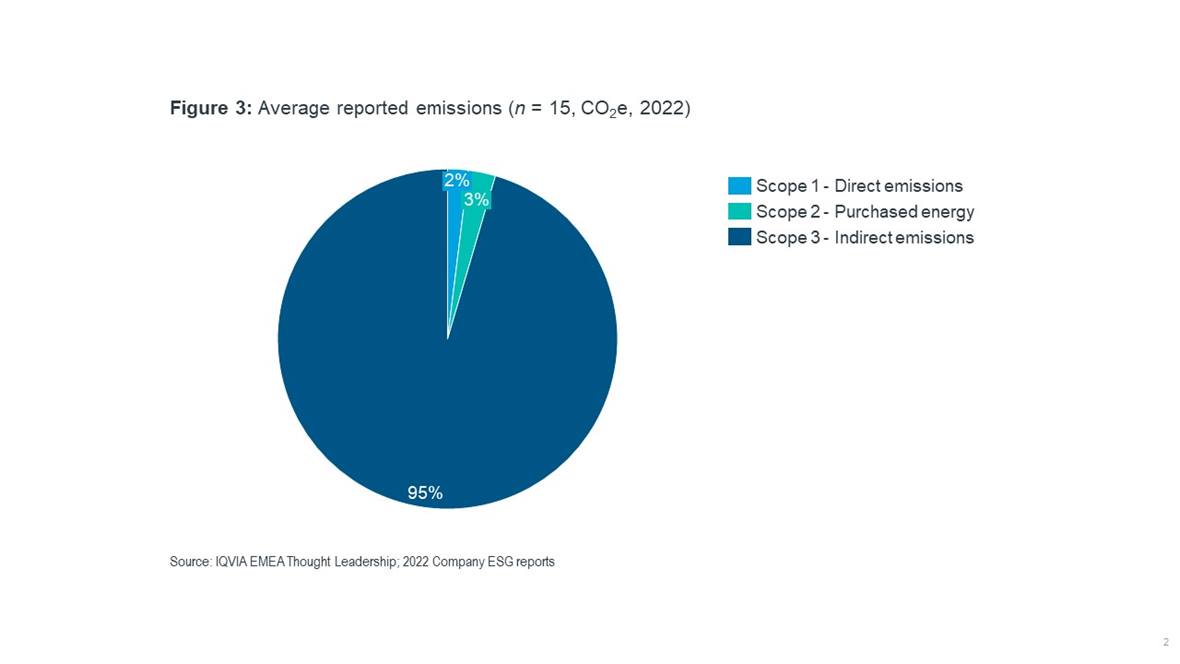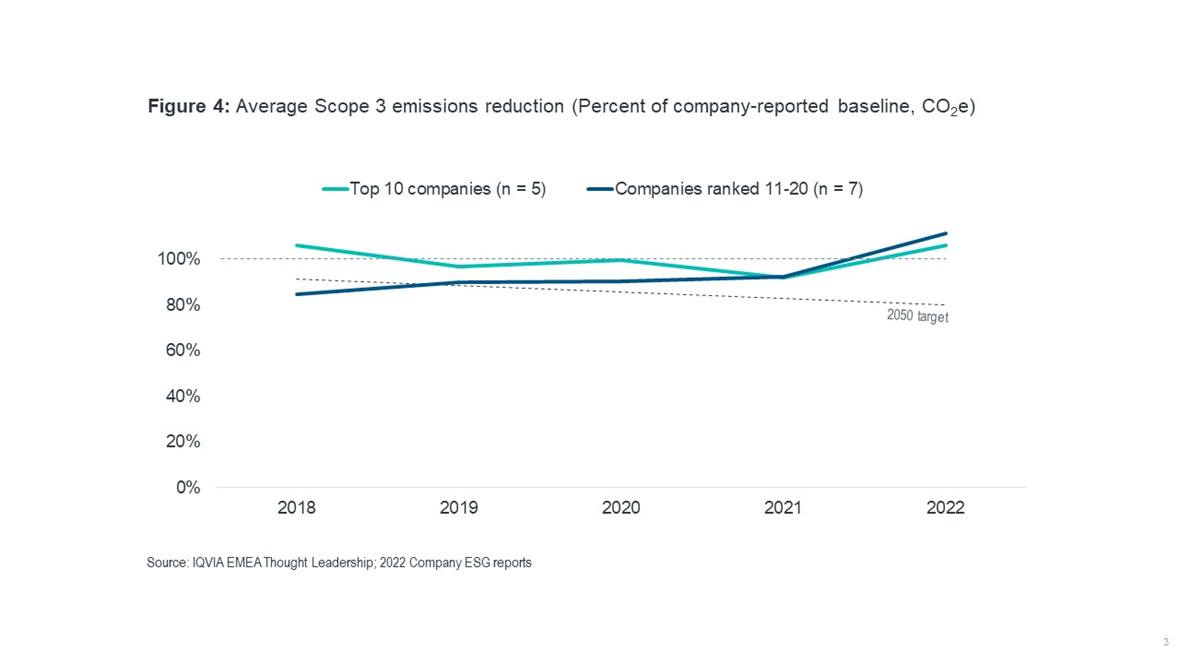





















- Blogs
- Charting a greener course: Navigating the path to a lower carbon footprint in healthcare
Introduction
Climate change is undeniably reshaping the landscape of global healthcare, ranging from extreme weather events that exacerbate injuries and overwhelms medical facilities to the proliferation of diseases, such as the spread of infectious diseases as well as contributing to the rise in respiratory and cardiovascular ailments.
Mitigation strategies, including robust public health measures and enhanced surveillance systems will help treat the symptoms of a changing climate, but to address the root cause, all stakeholders must strive to lower their own carbon footprint.
More companies begin reporting emissions
Numerous pharmaceutical companies have pledged to curtail greenhouse gas (GHG) emissions as they recognise the imperative of environmental stewardship and have begun reporting their commitments and progress in their Environmental, Social and Corporate Governance (ESG) reports.
The initial step towards assessing their effectiveness involves measuring progress, essential for understanding the industry's trajectory and pinpointing areas where resources can be best allocated. IQVIA researched the ESG statements of major pharmaceutical companies over multiple years, to provide clarity and facilitate a deeper understanding of this emergent area.
Averaging out ESG data from major pharmaceutical companies, see Figure 1, one can gauge the average progress of large companies in the sector which have pledged to reduce emissions by 2050. These are companies that typically have the broadest patient reach and are advancing innovation.

The aggregated data shows that Scope 1, direct emissions from owned and controlled sources, is broadly flat, meaning that the sector has so far struggled to maintain consistency in reducing overall direct emissions. However, the underlying data shows that top 20 pharma companies (by global Rx sales) have tended to reduce their Scope 1 emissions to below 85% of their baseline years and smaller companies (ranked 21 or lower) are ones that have typically increased emissions. Moreover, in the same period, the prescription pharmaceutical market grew at an annual rate of 7%, meaning that their emissions intensity (emissions per dollar of revenue) has likely decreased.
Scope 2 emissions, indirect emissions attributed to the generation of purchased energy are declining fastest due to switching energy suppliers to ones offering renewable energy. Of course, this means that the renewable energy must be offered by relevant countries. The proportion of renewable energy used in major manufacturing countries India and China are approximately 35% and 15%, respectively, higher than both the UK and US.
The use of electricity for manufacturing and running facilities is typically the largest component of Scope 2. RE100 is an organisation tracking a company’s switch to 100% renewable energy, and the progress for pharma companies can be seen in Figure 2.

The major signatories of RE100 are large pharma, with Biogen consistently using all its electricity from renewable sources and Novo Nordisk alongside AstraZeneca making huge progress in recent years. Biogen’s renewable electricity strategy includes reducing demand by increasing efficiency, onsite generation, direct purchasing of green power, virtual agreements and credits.
Indirect emissions are the largest source of emissions
At the latest count, using comprehensive company reported figures for 2022, Scope 3 is the largest portion of a company’s GHG emissions, which make up all indirect emissions from a company’s value chain not included in Scope 2, contributing an average of 92% (n = 15) of emissions as shown in Figure 3.

Scope 3 reporting is imprecise, with many dependencies, yet it is good to see companies continuing to report deeper breakdowns so we can gain a clearer understanding of the supply chain.
Figure 4 shows that 2022 saw sharp rises in Scope 3 emissions, this was the even across major companies, both in the top 10 and those ranked 11-20.

The patterns seen in 2021 and 2022 are a balance of positive and negative drivers. Commonly reported reasons for the changes are:
- Increased emissions distributing COVID-19 vaccines and therapies, primarily through cold-chain air freight.
- To avoid shortages, such as for insulins, companies will switch from using sea to air freight. A notable event that forced a large number of these switches was the Suez Canal blockage in 2021. However, in general, there is a greater priority on using sea freight to reduce emissions in the near future.
- In 2022, there was an increase in purchased goods and services across many large companies, which is often the largest component of Scope 3 upstream emissions.
- There is a significant uptick in 2022 business travel emissions, both international and commute, as restrictions eased. Balancing this, employee work-from-home programmes have helped keep employee travel low since the pandemic.
- There is also an increase in the scope and coverage of emissions audited by companies, which is a positive sign as more emissions data is being captured.
Tackling indirect emissions will require strong Healthcare System leadership
Whereas the use of medicines by patients is the major contributor to downstream Scope 3 emissions, the largest upstream contribution comes from energy consumption during raw material extraction and manufacturing operations. One of the inherent challenges lies in the reliance on the infrastructure of the countries hosting these manufacturing facilities for sourcing renewable energy. Pharmaceutical companies that have successfully reduced Scope 3 emissions could be looked to for solutions. For instance, Sanofi has achieved a Scope 3 reduction of 15% since 2020. This reduction can be attributed to a careful approach by employees to reduce emissions and an overall major drive to switch to renewables throughout their Scope 3 value chain.
While pharmaceutical companies lack direct control over raw material extraction and energy sourcing, establishing supplier networks becomes crucial to educate and encourage upstream entities to adopt sustainability targets. Creating frameworks that incentivise and motivate these upstream partners to implement their own emission reduction goals becomes imperative in addressing this complex challenge.
Pharmaceutical companies have shown notable advancements in managing Scope 1 and 2 emissions, yet addressing Scope 3 emissions requires collaborative efforts beyond their individual capacities. Achieving reductions here necessitates comprehensive cooperation across the healthcare system, transcending the capabilities of any single company. Healthcare systems can also impose buyer pressure and align stakeholders to national targets.
As part of an international initiative attempting to achieve this stewardship, the WHO is launching their Operational Framework at COP28, for sustainable healthcare systems. The key objectives of the framework are to guide and support them in strengthening their climate-related initiatives.
So far, 69 countries have committed to sustainable low-carbon healthcare systems, with 28 having gone a step further and pledged to achieve net zero.
This initiative aims to guide and fortify healthcare systems, empowering them to navigate the complexities of climate-related challenges and drive meaningful change on a global scale. Through such collaborative endeavours, the vision of resilient and greener healthcare systems takes tangible steps towards realisation.
If you would like to read more on quantifying and tackling pharma’s carbon footprint, then please download our white paper, “Remedy of the commons: Addressing Pharma’s Carbon Footprint” here.





